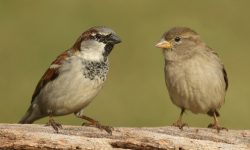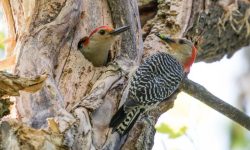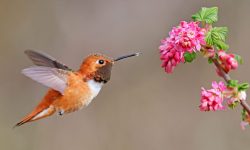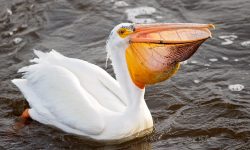Understanding the seasonal diet of turkeys is essential for wildlife enthusiasts, backyard bird watchers, and anyone interested in the habits of these fascinating birds. Turkeys, both wild and domesticated, adapt their diet based on what is available in each season. Their food choices vary greatly due to changes in vegetation, insect availability, and weather patterns.
In this comprehensive guide, we explore what turkeys eat during winter, spring, summer, and fall, giving you a clear picture of their year-round nutritional behavior.
The General Diet of Turkeys
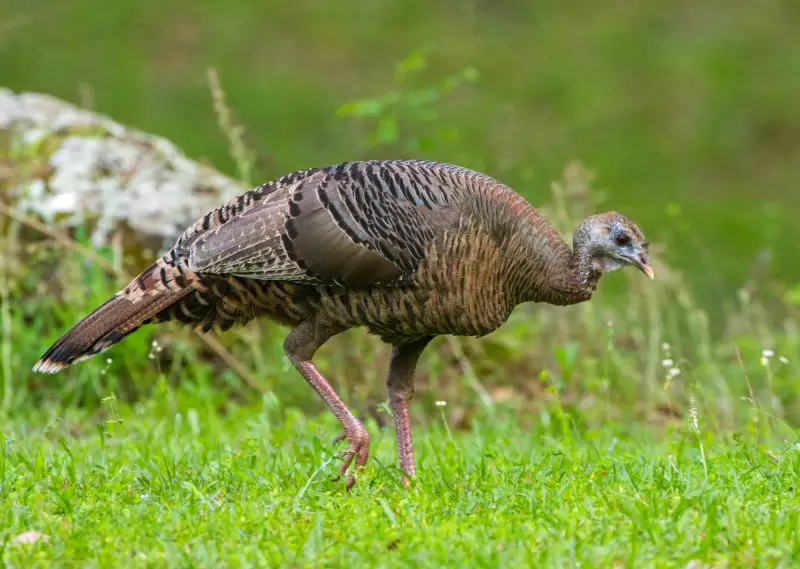
Turkeys are opportunistic omnivores, meaning they have a highly adaptable diet composed of both plant-based and animal-based food sources. In the wild, turkeys forage actively from dawn to dusk, scratching through leaf litter, grass, and forest floors in search of sustenance. Their sharp eyesight helps them locate even small food items such as beetles or fallen seeds, and their strong beaks allow them to efficiently tear through vegetation or capture prey. Wild turkeys consume a broad range of natural foods including seeds, acorns, nuts, berries, tender leaves, and roots. Animal-based components of their diet include insects like grasshoppers, beetles, and caterpillars, as well as small reptiles, amphibians, and even the occasional snail or worm.
Turkeys also change their feeding behavior based on their age and the availability of food. Young poults (baby turkeys) need high-protein diets, which they obtain primarily from insects during their first few weeks of life. Protein is critical at this stage for rapid growth and development. As they mature, their diets become more plant-based but remain flexible enough to take advantage of seasonal abundance and local ecosystems. Wild turkeys may feed in forests, grasslands, wetlands, and even agricultural fields where crops such as corn and soybeans are accessible.
Domesticated turkeys, which are raised for meat production or breeding, typically consume a carefully formulated commercial feed rich in grains such as corn, soybean meal, and wheat, supplemented with essential vitamins and minerals. While this ensures consistent growth and production, many farmers also allow their turkeys to roam on pasture, giving them access to natural forage. This not only improves their overall health and quality of life but also enhances meat flavor in free-range birds. Regardless of their environment, all turkeys benefit from a varied, nutrient-dense diet to support their immune systems, maintain healthy plumage, and ensure successful breeding cycles.
Let’s now break down the turkey’s diet by season.
What Do Turkeys Eat in Winter?
Limited Forage and Nutrient Challenges
Winter is the most demanding season for wild turkeys, as natural food sources become limited or entirely inaccessible. Deep snow, ice, and frozen ground make it difficult for them to forage effectively. With less daylight and frigid temperatures, turkeys adjust their activity levels and rely more on energy conservation. However, they still need to feed regularly to survive the cold months. During this time, they depend heavily on their ability to scratch through snow and leaf litter in search of leftover seeds, nuts, and any available plant matter.
As insects disappear and green vegetation dies back, turkeys shift their diet toward higher-calorie foods to maintain body heat and stamina. Their digestive systems are well-adapted to break down fibrous or dried food sources, and they take full advantage of any available nutrition. While they may reduce their movement to preserve energy, wild turkeys often travel considerable distances in search of food, especially when snowstorms or deep cold linger for extended periods.
Primary Winter Foods
In the absence of lush foraging opportunities, wild turkeys turn to a core set of winter food staples. Acorns and other hard mast like beechnuts become critical for survival due to their high fat content and caloric density. Turkeys will spend hours scratching under trees or snow to uncover these valuable resources. Leftover grains in agricultural fields—such as corn, wheat, and soybeans—are another lifeline, particularly in areas where crops were recently harvested. These grains provide not only carbohydrates but also some protein, which helps them endure prolonged cold.
Turkeys also seek out dried berries and seeds still clinging to shrubs or hidden in underbrush. These small finds can make a big difference in their daily energy intake. When more desirable foods are scarce, they resort to pecking at tree buds, twigs, and the tender inner bark of certain trees and shrubs. Although these woody materials are less nutritious, they offer critical roughage and fill in dietary gaps during severe conditions. In harsh winters, turkeys frequently gather in flocks near consistent food sources, such as forest edges, farm fields, or feeding stations set up by humans, increasing their odds of survival through communal foraging and predator vigilance.
What Do Turkeys Eat in Spring?
The Season of Renewal and Abundance
Spring is a time of renewal in the wild, and for turkeys, it represents the beginning of an abundant foraging season. As snow recedes and the soil thaws, a wide range of food sources reappear, providing nourishment after the lean winter months. This period also aligns with the wild turkey’s breeding season, placing increased nutritional demands on hens as they prepare to lay eggs. To support this reproductive effort, turkeys prioritize high-energy and high-protein foods that are critical for both body condition and successful reproduction.
The landscape in spring transforms quickly, offering young, tender vegetation that is rich in moisture and easy to digest. The availability of fresh greens and the return of insect life offer an ideal combination of carbohydrates, vitamins, and proteins. In this season, turkeys are often seen foraging in forest clearings, meadows, and along edges of wooded areas where sunlight accelerates plant growth and insect activity.
Primary Spring Foods
Turkeys take full advantage of the tender green shoots and early grasses that sprout in abundance during the spring. These provide essential nutrients and fiber, supporting digestion and feather regeneration. As the temperatures rise, insects and invertebrates become more active, and turkeys eagerly consume grasshoppers, beetles, caterpillars, and earthworms. These protein-rich sources are particularly important for hens, whose bodies need extra nourishment to sustain egg development.
Wildflowers and low-growing plants like clover also form a significant part of the spring diet. These plants offer not just carbohydrates but also hydration through their high moisture content, which is especially helpful during warmer spring days. As trees bud and bloom, turkeys begin feeding on catkins, young leaves, and soft buds, which are packed with nutrients. This seasonal variety provides an optimal balance of plant- and animal-based foods, helping turkeys recover from winter, prepare for nesting, and begin molting into fresh plumage.
What Do Turkeys Eat in Summer?
Peak Foraging and Protein Intake
Summer marks a period of peak abundance for turkeys, offering a wide variety of nutritious foods in both plant and animal forms. The warm, long days stimulate dense vegetation and an explosion of insect life, creating ideal foraging conditions. This is especially critical for young turkeys, known as poults, who require protein-rich diets to support rapid growth, feather development, and immune function. Adult turkeys also benefit from the season’s bounty, storing energy and nutrients for the upcoming molting period and preparing for the slower foraging months ahead.
Turkeys become highly active foragers during the summer, spending most daylight hours exploring open fields, forest edges, meadows, and areas near water sources. Their diet expands to include more moisture-rich foods to compensate for the heat, and their feeding habits become more opportunistic. Poults in particular follow their mothers closely as they learn to locate insects and soft vegetation essential for survival.
Primary Summer Foods
Insects play a dominant role in the summer diet, particularly for poults. Grasshoppers, beetles, ants, crickets, spiders, and other ground-dwelling invertebrates are consumed in large numbers. These creatures provide essential amino acids, which help support muscle and feather development. The abundance of bugs during summer makes it the most protein-rich season for wild turkeys.
Berries and soft fruits such as raspberries, blackberries, blueberries, and wild cherries also become available, offering sugars, vitamins, and hydration. These fruits are foraged from low shrubs and ground plants and are a favorite among both adult turkeys and juveniles. In addition, turkeys consume seeds and grains from grasses and weedy plants that reach maturity in summer. These provide energy and support digestive health.
On occasion, turkeys may supplement their diets with small amphibians such as frogs, especially in areas near water. Though less common, these protein sources can be particularly valuable for growing poults. To stay hydrated, turkeys seek out foods with high moisture content and drink from rain puddles, creeks, and shallow ponds throughout the season.
What Do Turkeys Eat in Fall?
Preparing for the Cold Months
Fall is a pivotal season for turkeys as they begin to prepare for the harsh conditions of winter. With the days growing shorter and temperatures cooling, wild turkeys instinctively increase their food intake to build up essential fat reserves. Their foraging habits become more strategic and focused on high-calorie, nutrient-dense foods that can sustain them through periods when resources will be limited. The abundance of agricultural leftovers and natural mast in this season makes it an ideal time to bulk up.
During fall, turkeys are often seen feeding in groups. Flocking behavior intensifies as the season progresses, with birds gathering in larger numbers than in spring or summer. This social behavior not only offers protection from predators but also improves their ability to locate concentrated food sources, such as leftover grains in harvested crop fields or mast under trees.
Primary Fall Foods
One of the most important food groups in the fall diet of turkeys is tree nuts. Acorns, especially from white and red oak trees, and beech nuts are energy-rich and abundant in many forested regions. These nuts are high in fat, which helps turkeys develop the insulating body reserves they need for winter survival. Turkeys use their strong beaks and feet to scratch through leaf litter and uncover these prized food items.
As farmers harvest their crops, turkeys take advantage of the leftovers in agricultural fields. Corn and soybeans that fall to the ground during harvesting are quickly scavenged, providing an excellent source of carbohydrates and protein. Turkeys also forage near gardens and rural properties, where they may feed on seeds from pumpkins, squash, and other late-season vegetables. In regions with orchards, fallen apples and other fruits are eagerly eaten, offering both sugars and hydration.
This season of plenty is critical, as it allows turkeys to enter winter in optimal condition. By diversifying their diet with a variety of energy-dense foods, they increase their chances of surviving the food-scarce months that lie ahead.
Seasonal Dietary Comparison
To better understand how turkey diets evolve throughout the year, consider the following comparison:
Season |
Protein Source |
Plant Source |
Key Food Items |
|---|---|---|---|
Winter |
Minimal (occasional insects) |
Tree buds, nuts, grains |
Acorns, corn, bark |
Spring |
Insects, worms |
Green shoots, clover |
Beetles, grasses, catkins |
Summer |
Insects, amphibians |
Berries, seeds |
Grasshoppers, fruits |
Fall |
Occasional insects |
Nuts, grains, fruits |
Acorns, soybeans, apples |
Each season offers a unique combination of nutrients that turkeys rely on for survival, reproduction, and molting.
Differences Between Wild and Domesticated Turkey Diets
While this article primarily focuses on wild turkeys, it’s worth noting how domesticated turkeys compare. Farm-raised turkeys often receive commercial feeds composed of corn, soybean meal, vitamins, and minerals. These are formulated to promote growth and meat production.
However, domesticated turkeys also benefit from seasonal forage if given access to pasture. They enjoy many of the same foods as their wild counterparts, including grasses, bugs, and fruits. Providing pasture access can enhance their nutrition and quality of life.
In contrast, wild turkeys must adapt continuously to their environment and depend entirely on what nature provides, making their seasonal dietary shifts much more significant.
How Turkeys Find Food Throughout the Year
Wild turkeys use their excellent vision and strong legs to forage effectively. They scratch the ground with their feet to uncover hidden seeds, insects, or nuts. In winter, they may dig through snow or travel to open fields where leftover crops are accessible.
In spring and summer, they roam through meadows, woodlands, and forest edges, taking advantage of diverse habitats. Their adaptability is a key reason why wild turkeys have rebounded so successfully in North America.
Turkeys also learn from one another. Flock behavior allows younger birds to observe older ones and mimic their foraging patterns, increasing their chances of finding seasonal food sources.
Tips for Feeding Wild Turkeys Year-Round
Supporting wild turkey populations through supplemental feeding can be rewarding, but it must be done ethically and with a focus on enhancing their natural behaviors. Feeding should never replace wild foraging or create dependency, and care should be taken to avoid attracting predators or encouraging aggressive behavior near human dwellings. By aligning seasonal feeding practices with the turkeys’ natural diet, you can promote healthier, more self-sufficient birds year-round.
Winter
During winter, natural food sources dwindle, and supplemental feeding can be a helpful lifeline. Scattering cracked corn or a blend of grains near the edge of wooded areas offers accessible energy during cold months. Elevating food off deep snow, such as on a raised platform or bare ground, helps turkeys reach it more easily. However, it’s crucial not to overfeed or create a routine that causes the birds to rely solely on human-provided food. Feeding occasionally and in moderation ensures they continue foraging on their own.
Spring
In spring, the best way to help wild turkeys is by cultivating a natural habitat. Letting native plants like clover and wildflowers grow supports both foraging and nesting activities. Avoiding pesticides is particularly important during this time, as turkeys consume large quantities of insects, especially during the breeding season. Clean water sources such as birdbaths, shallow basins, or small ponds are beneficial and encourage frequent visits without disrupting their feeding habits.
Summer
As summer brings an abundance of insects and vegetation, the focus should shift to encouraging wild foraging. Planting native grasses and berry-producing shrubs creates a sustainable food landscape for both adult turkeys and their young. Allowing turkeys to search for bugs in your yard or on the edges of fields supports their natural behavior. If desired, you can occasionally leave fruit scraps like berries or melon rinds in open areas, but these should be limited and placed far from homes to discourage dependence or habituation.
Fall
Fall offers a great opportunity to support turkeys as they prepare for winter. If you manage a farm or garden, consider leaving a portion of crops such as corn, beans, or squash behind after harvest. Dropping extra pumpkins or vegetable remains near forest edges provides nutrient-dense options that turkeys will readily consume. Avoid offering processed foods, bread, or salty snacks, as these can be harmful and disrupt the birds’ dietary balance.
Feeding wild turkeys should always enhance their natural habits rather than replace them. The goal is to provide seasonal support without interfering with their instincts or creating a reliance on human sources. Responsible feeding not only benefits the birds but also fosters a healthier and more balanced ecosystem.
Conclusion
Turkeys are incredibly adaptive birds with a diet that changes drastically from season to season. In winter, they survive on acorns and grains. Spring brings protein-rich insects and fresh vegetation. Summer offers a buffet of berries and bugs, while fall delivers high-energy nuts and harvested crops to prepare for the cold.
By understanding what turkeys eat in each season, you can appreciate their resilience, support them ethically, and observe their behavior more insightfully throughout the year. Whether you’re a bird lover, landowner, or wildlife photographer, the seasonal feeding habits of turkeys offer a fascinating glimpse into nature’s rhythm.
Want to attract turkeys to your land? Start by planting native food sources and creating a habitat that welcomes them year-round.

